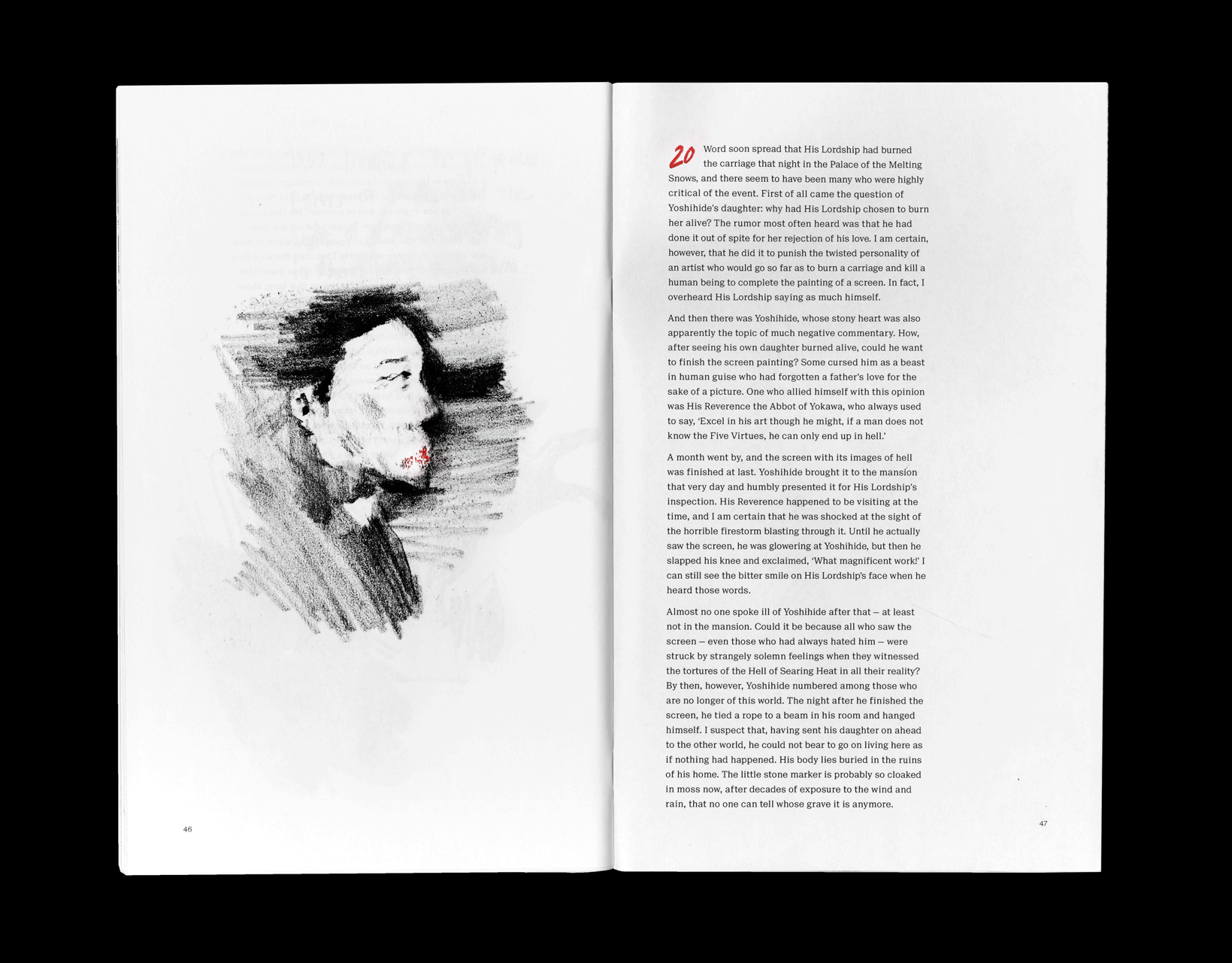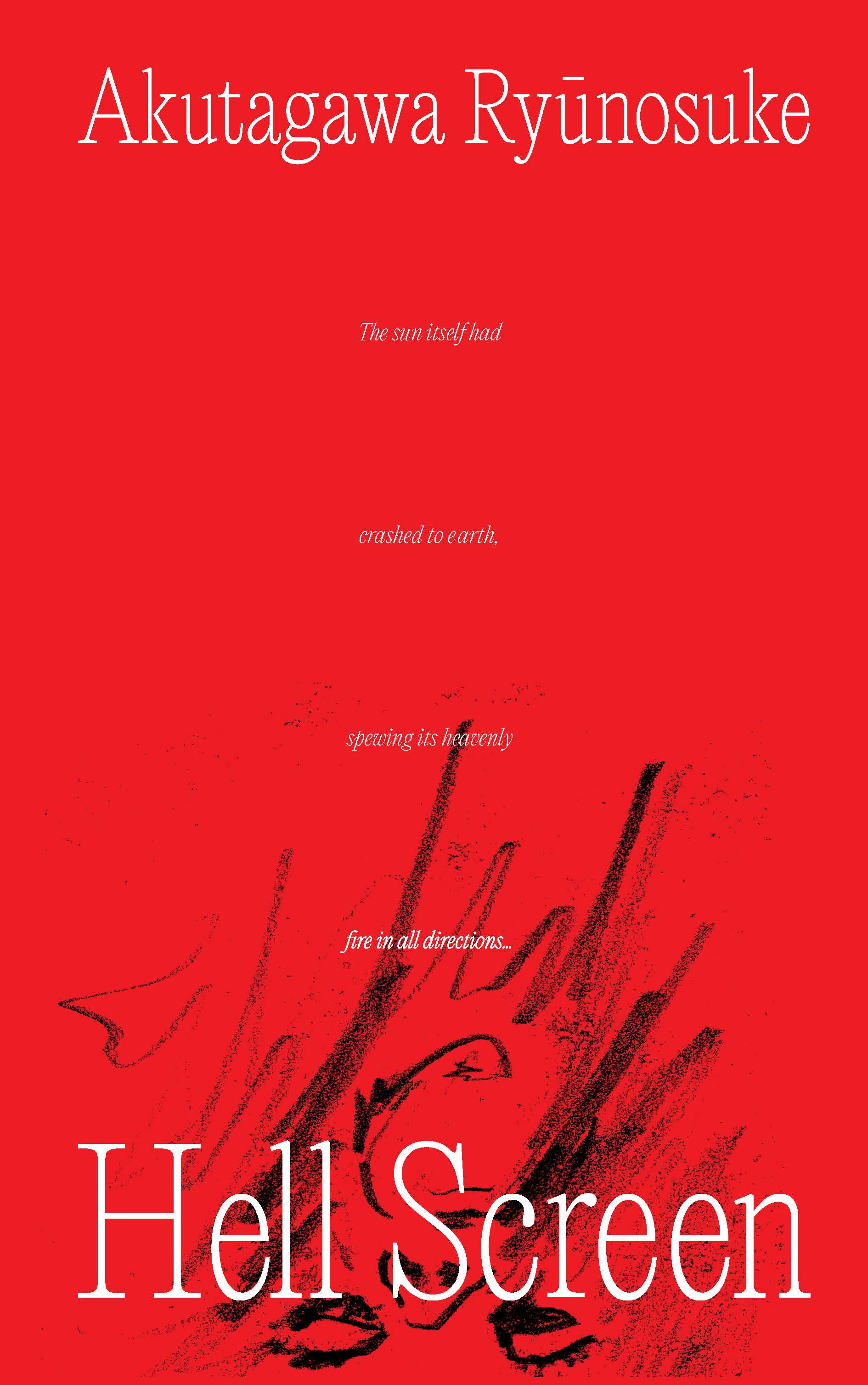
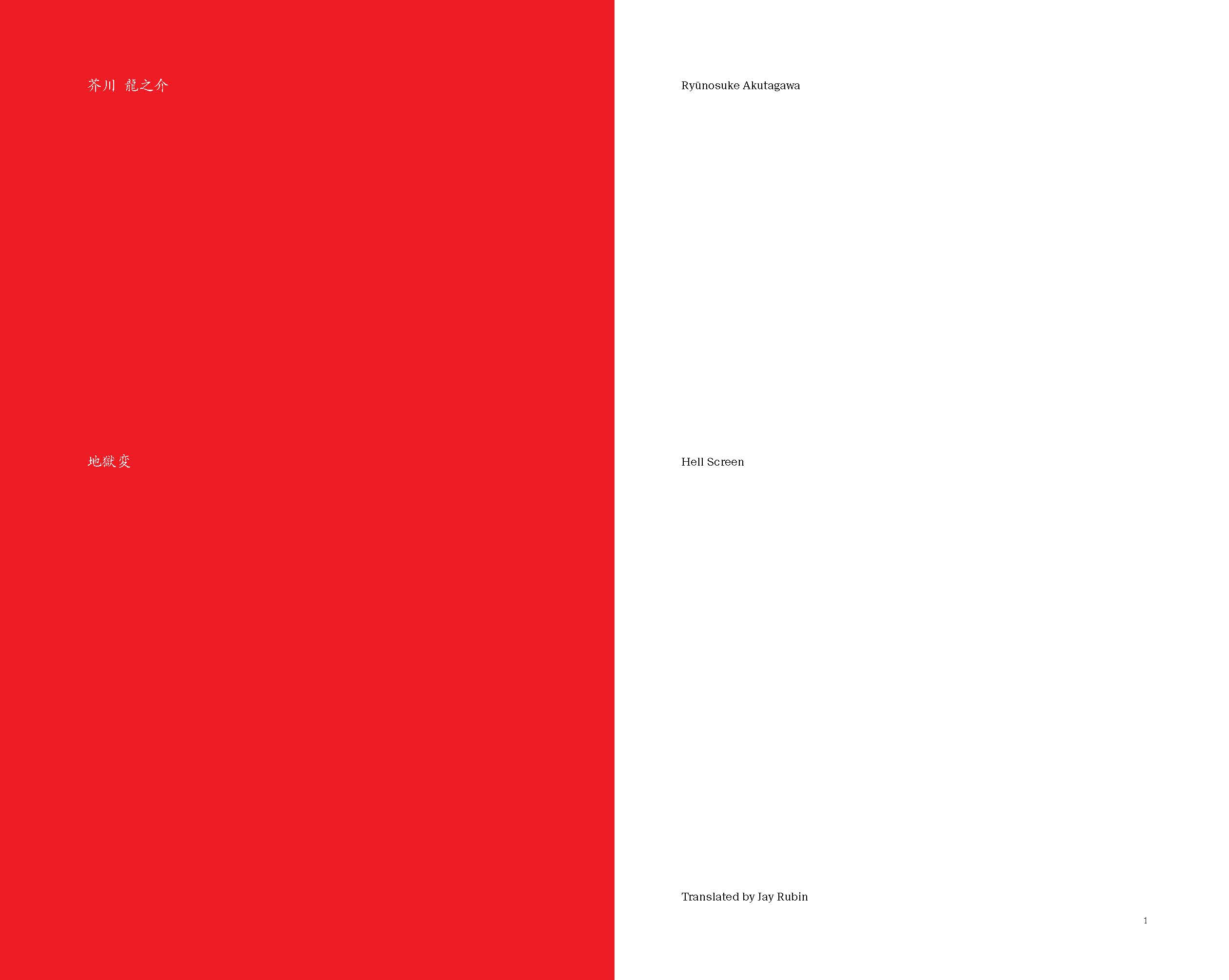
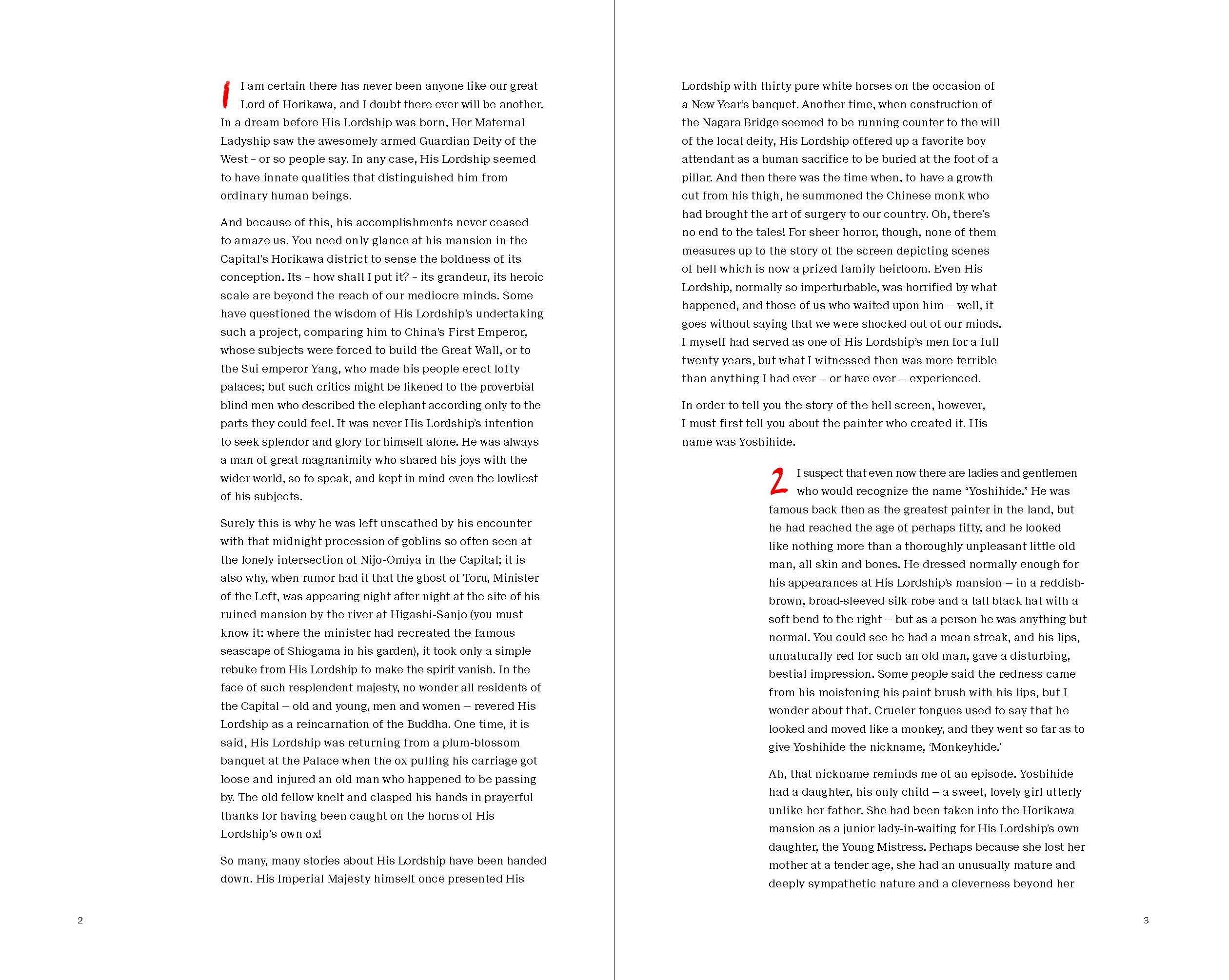
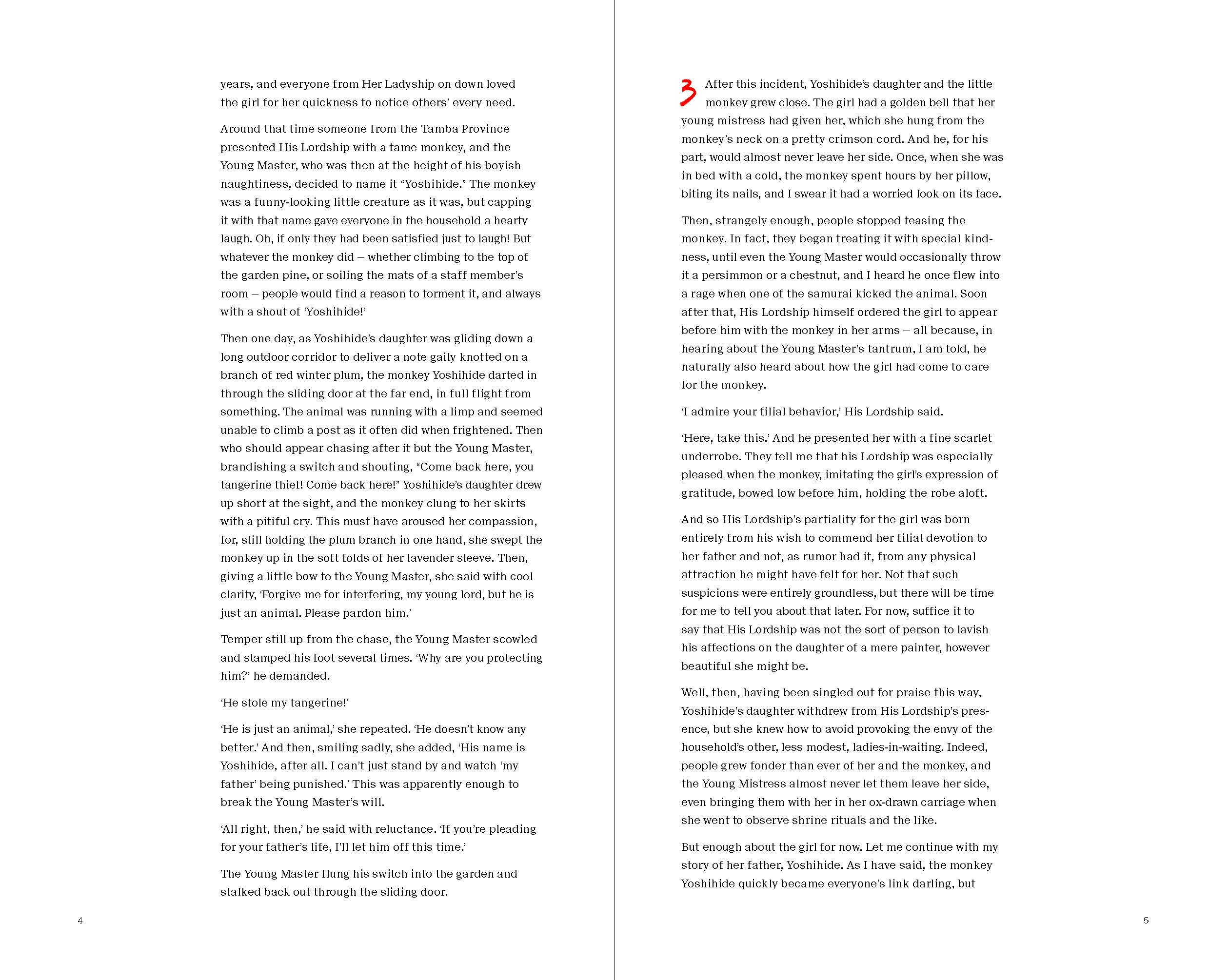
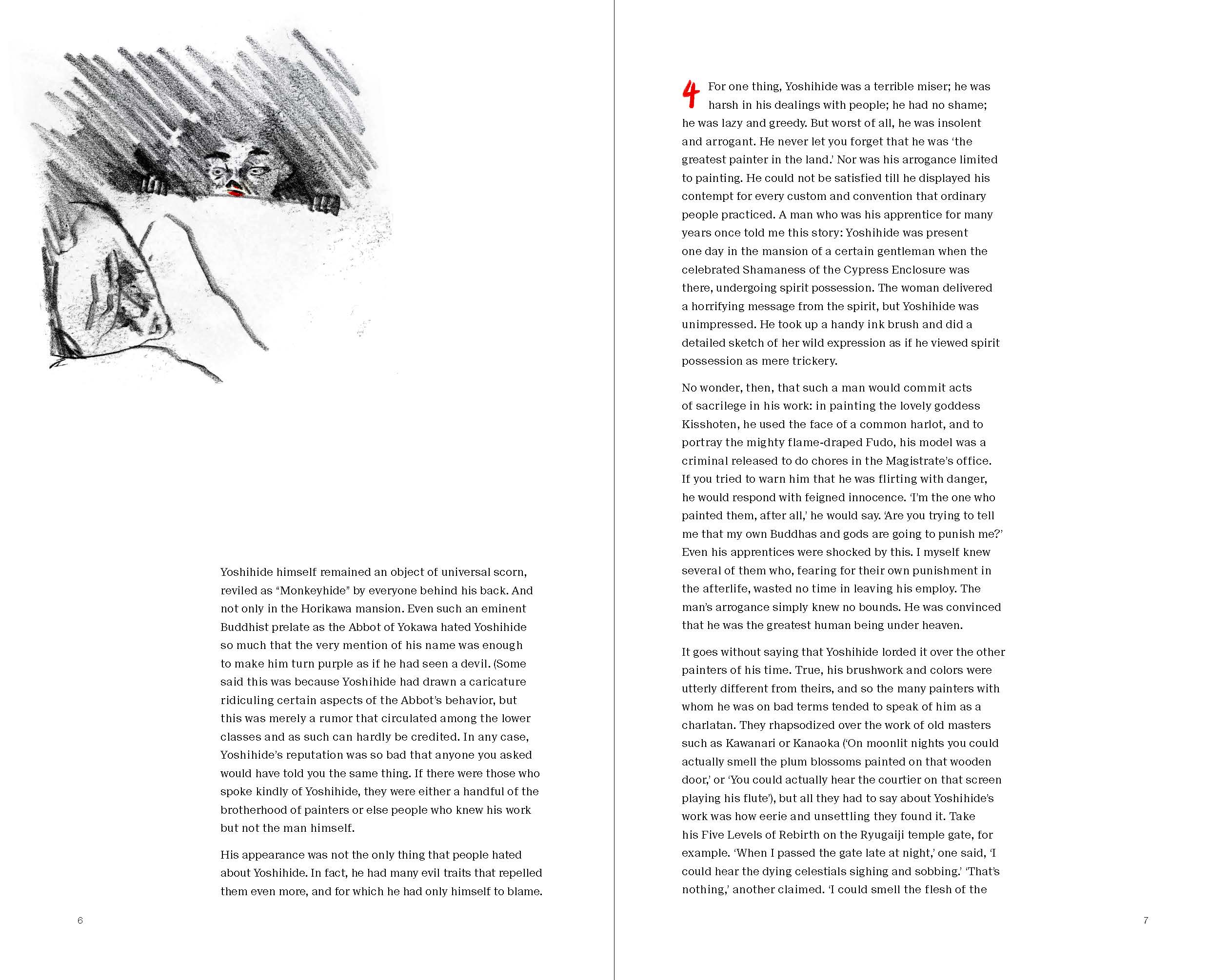
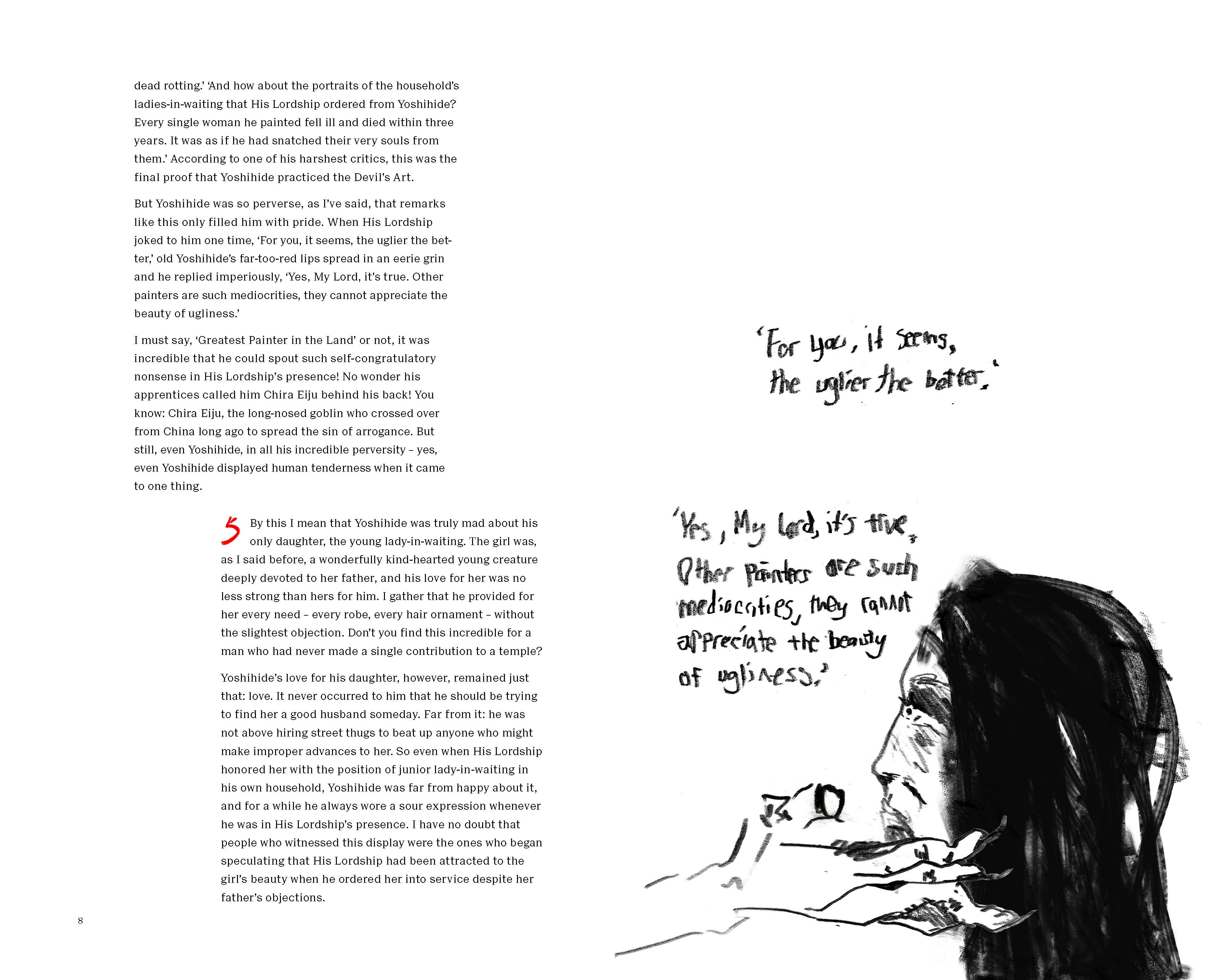
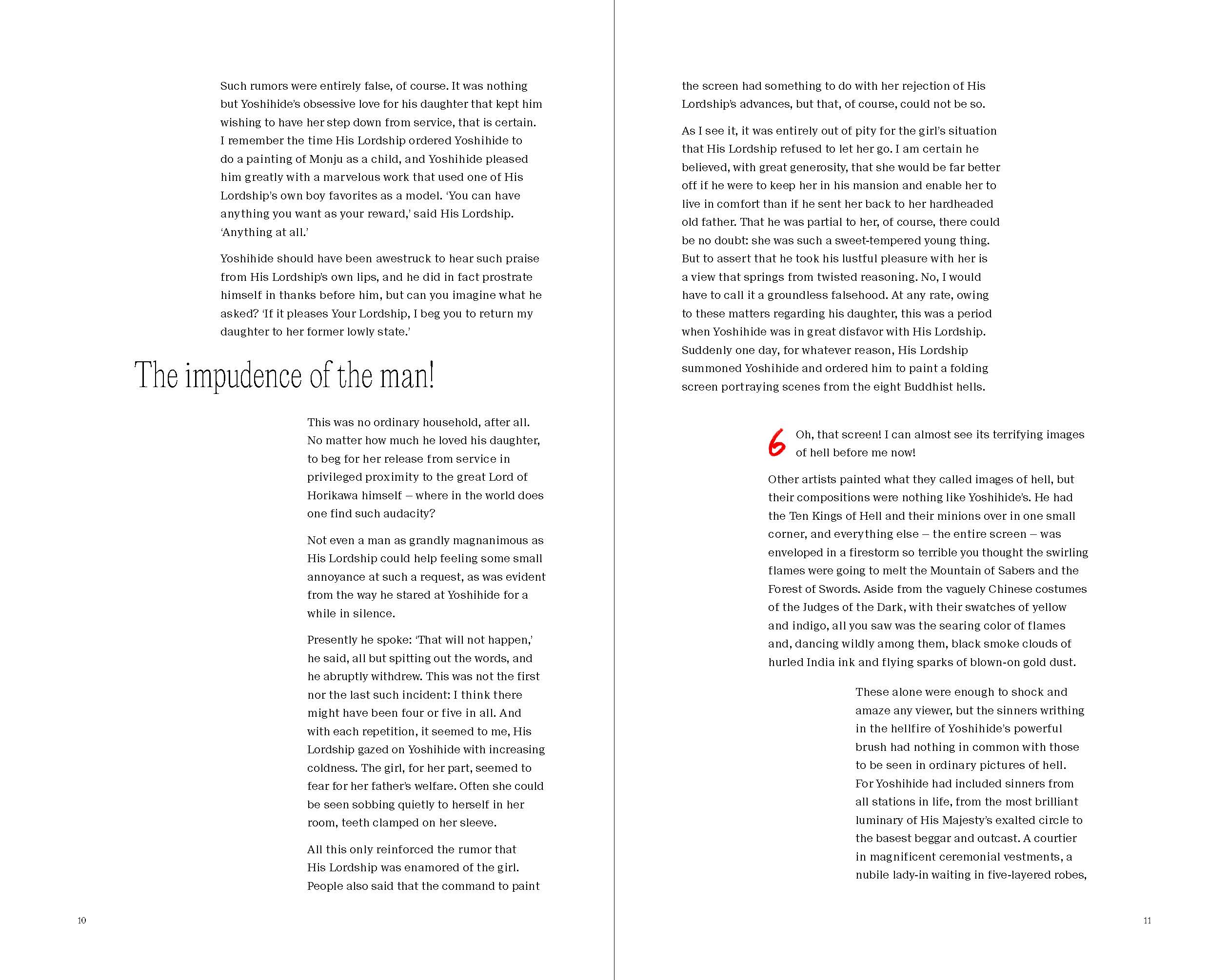
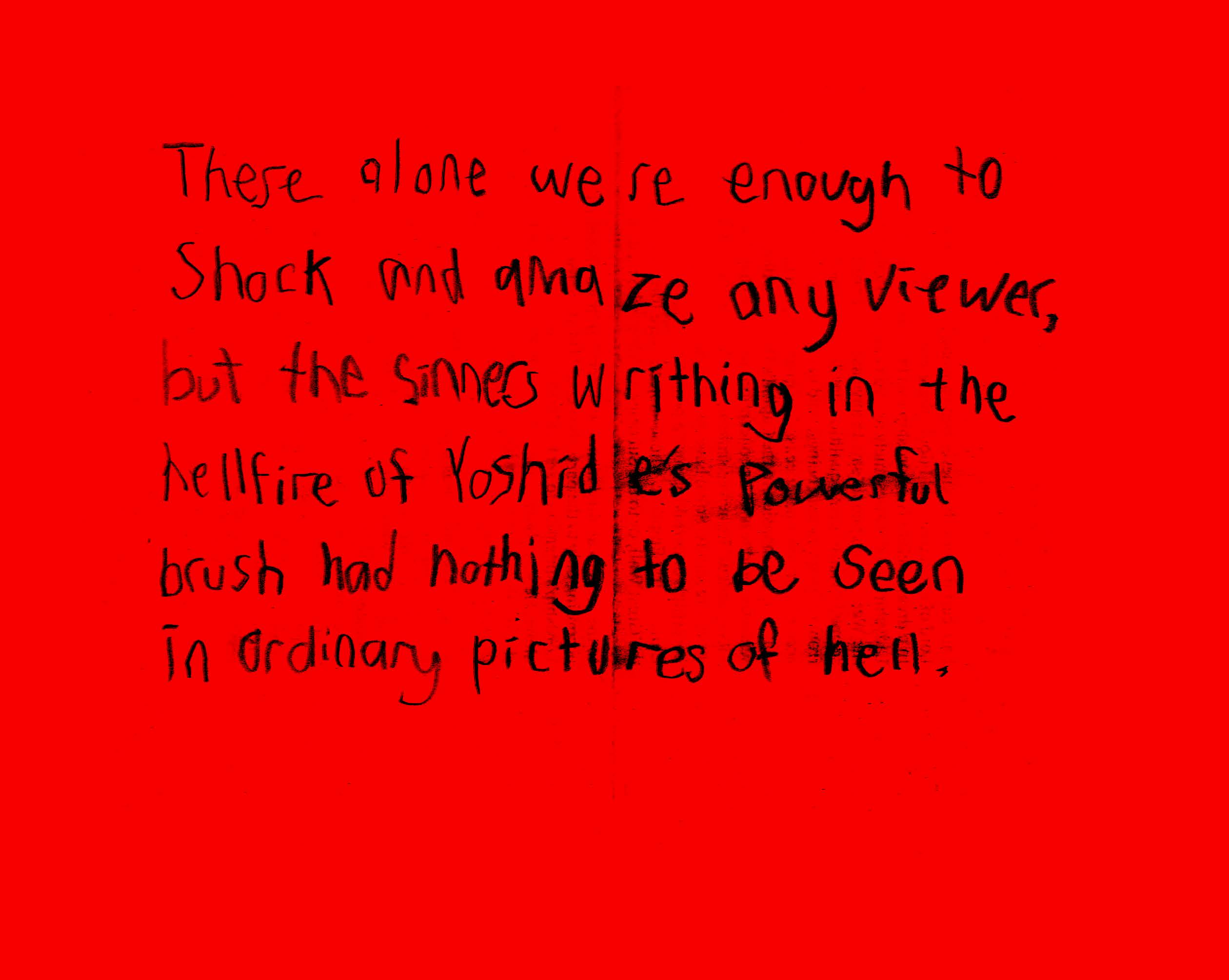
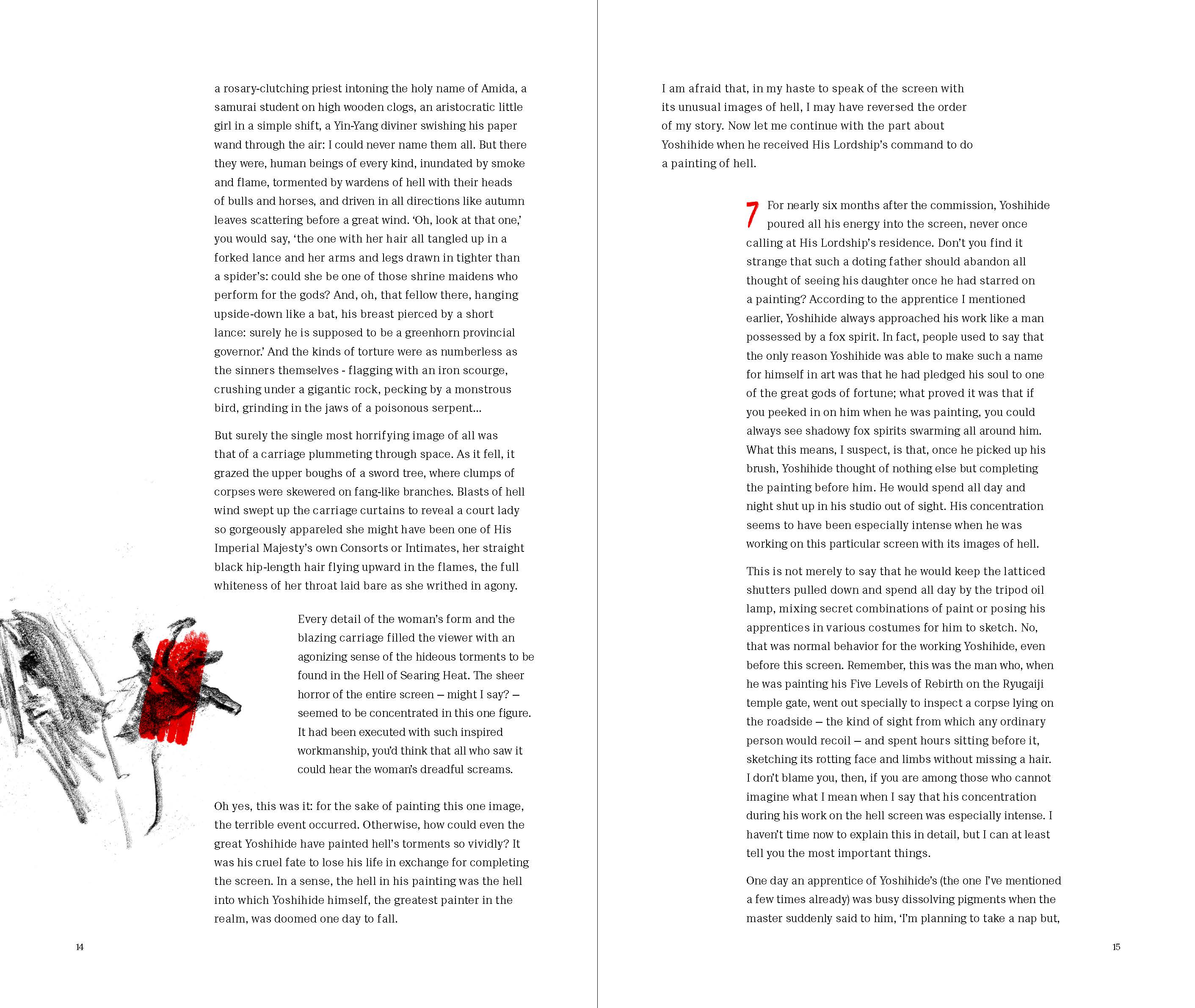
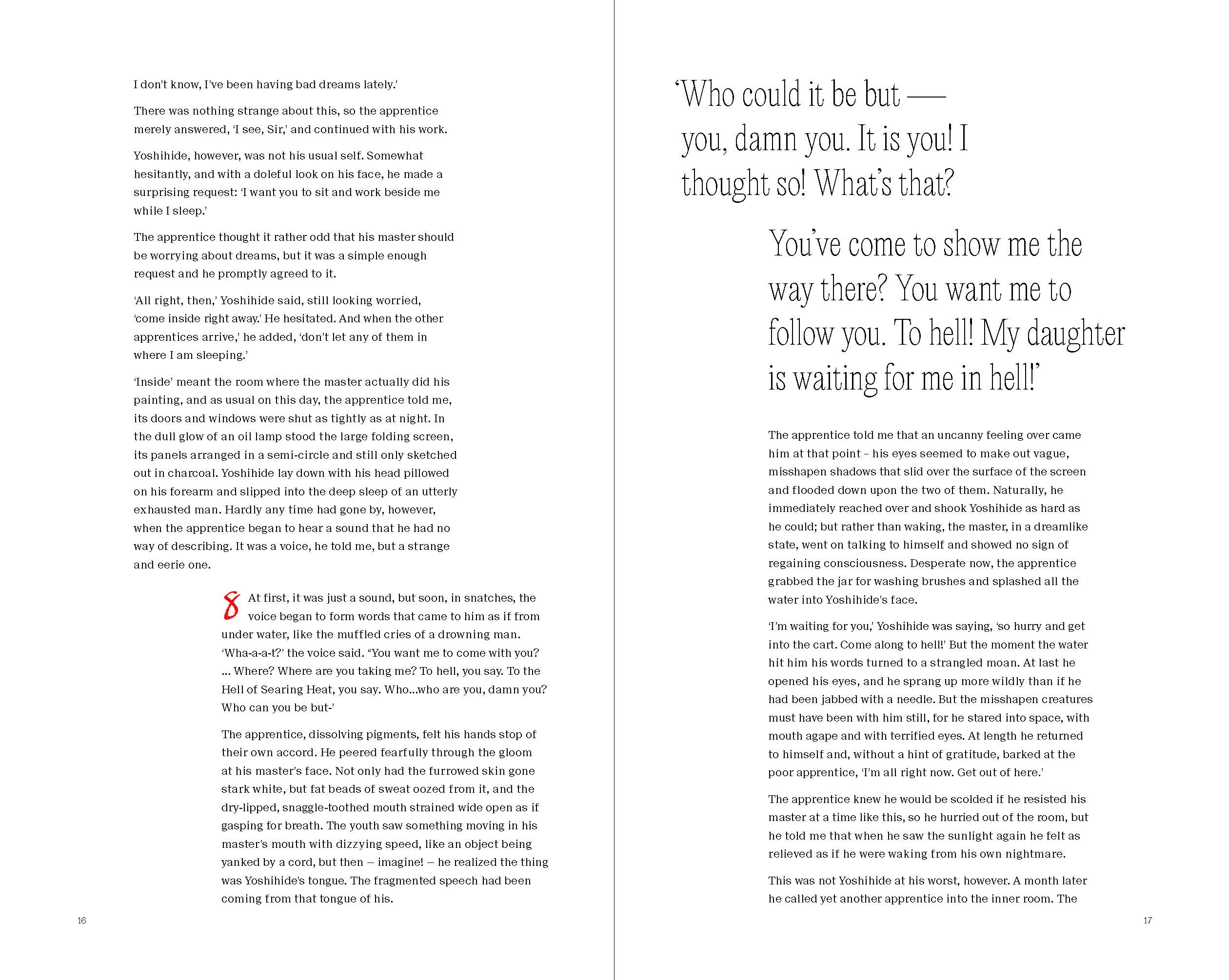
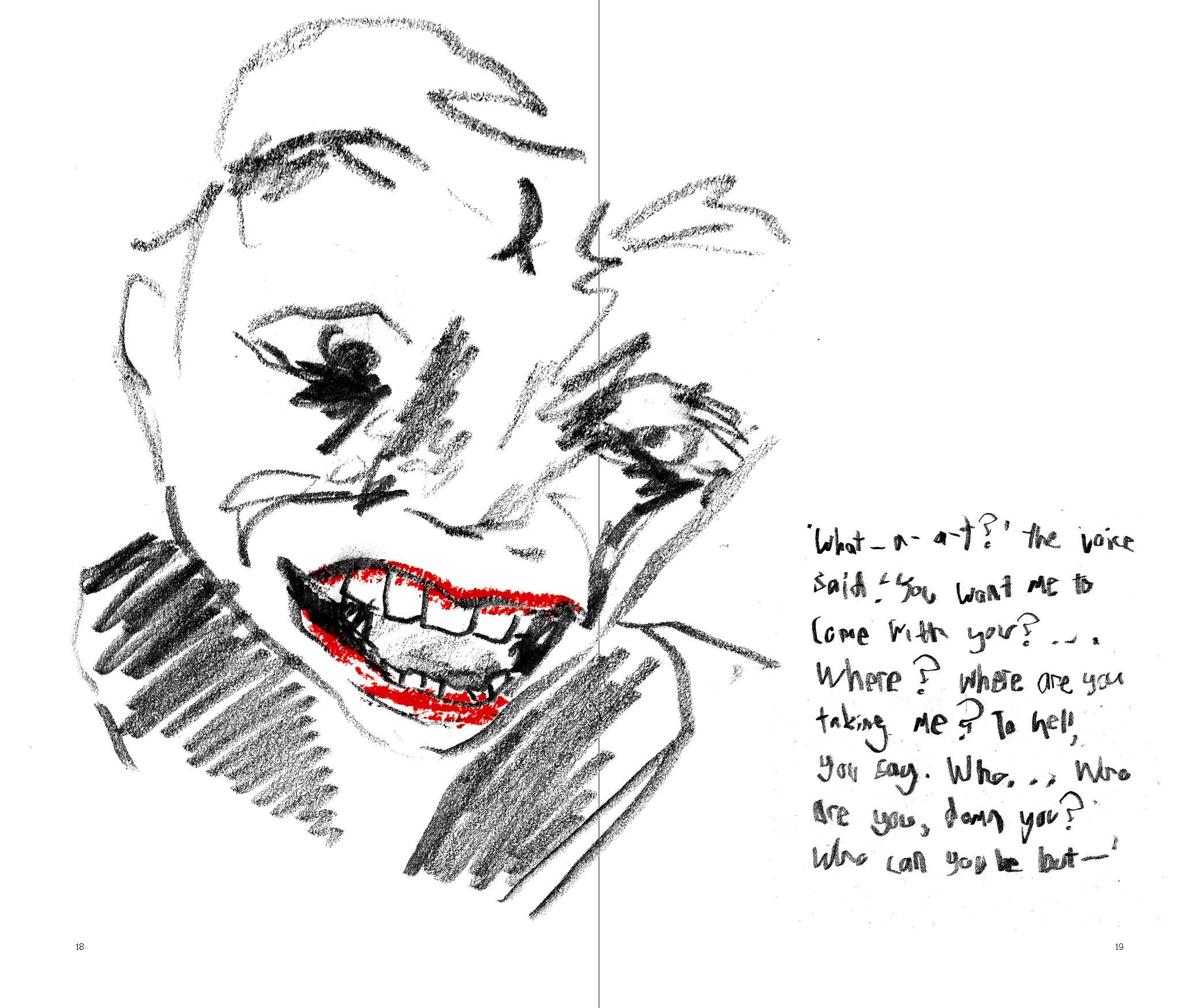
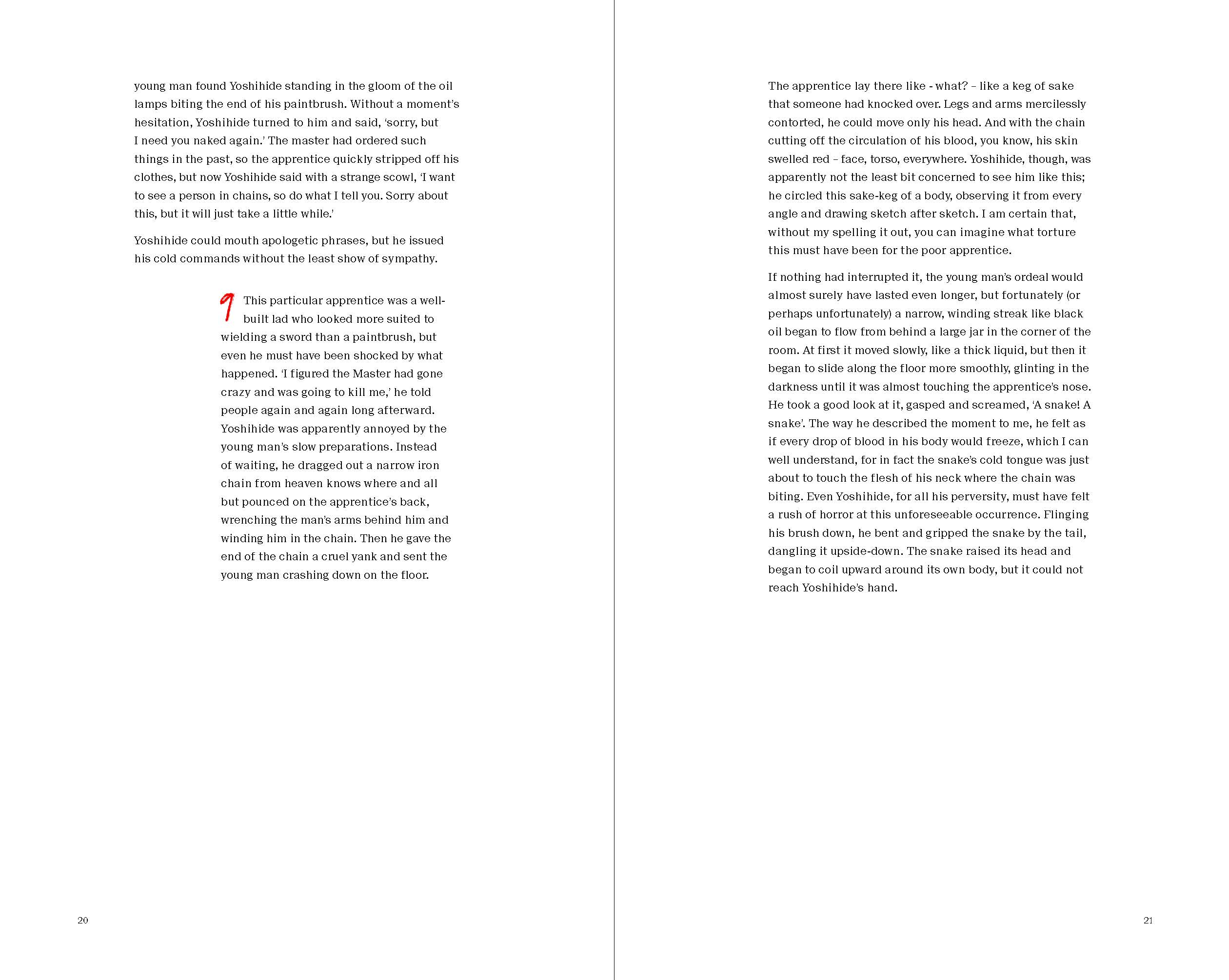
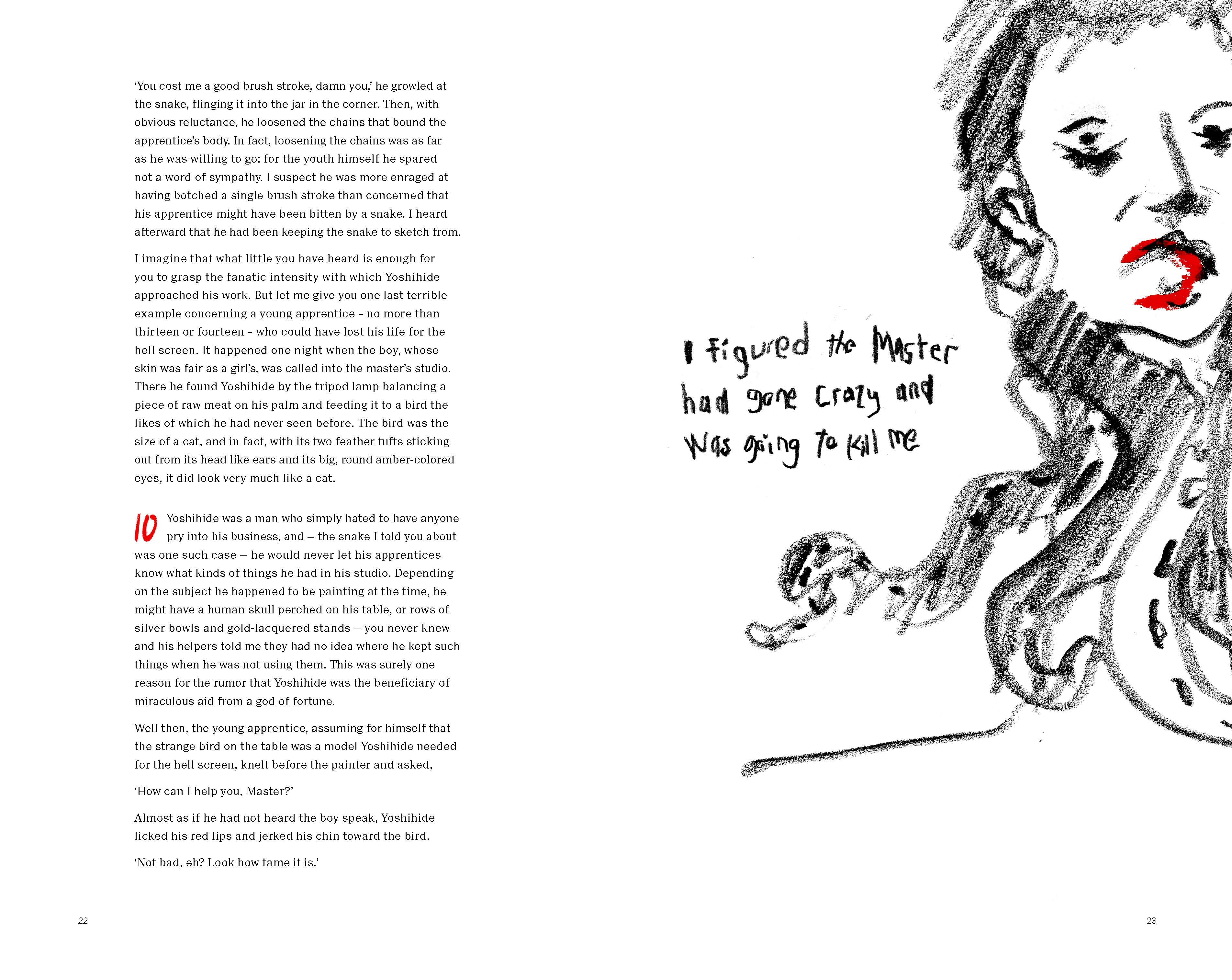
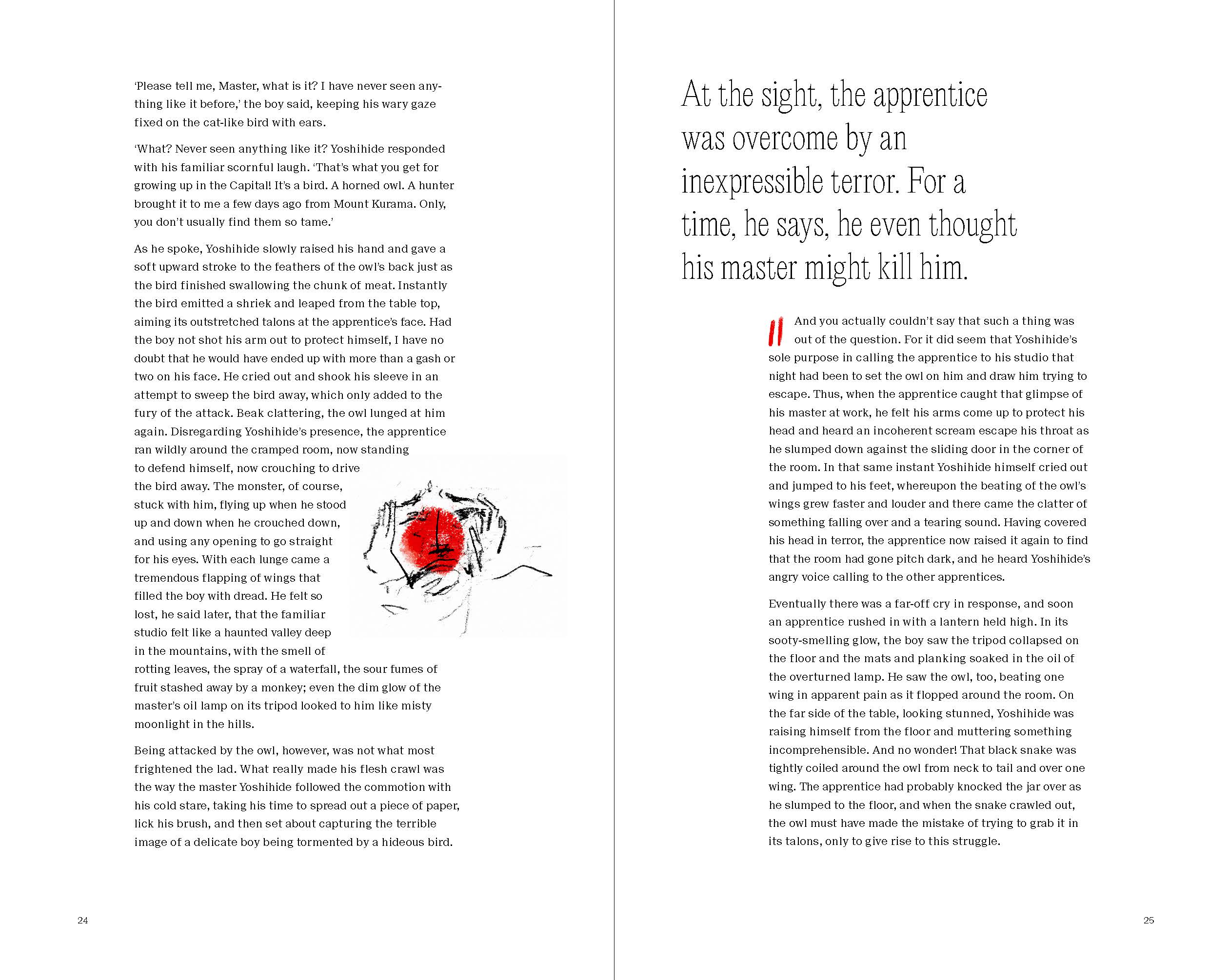
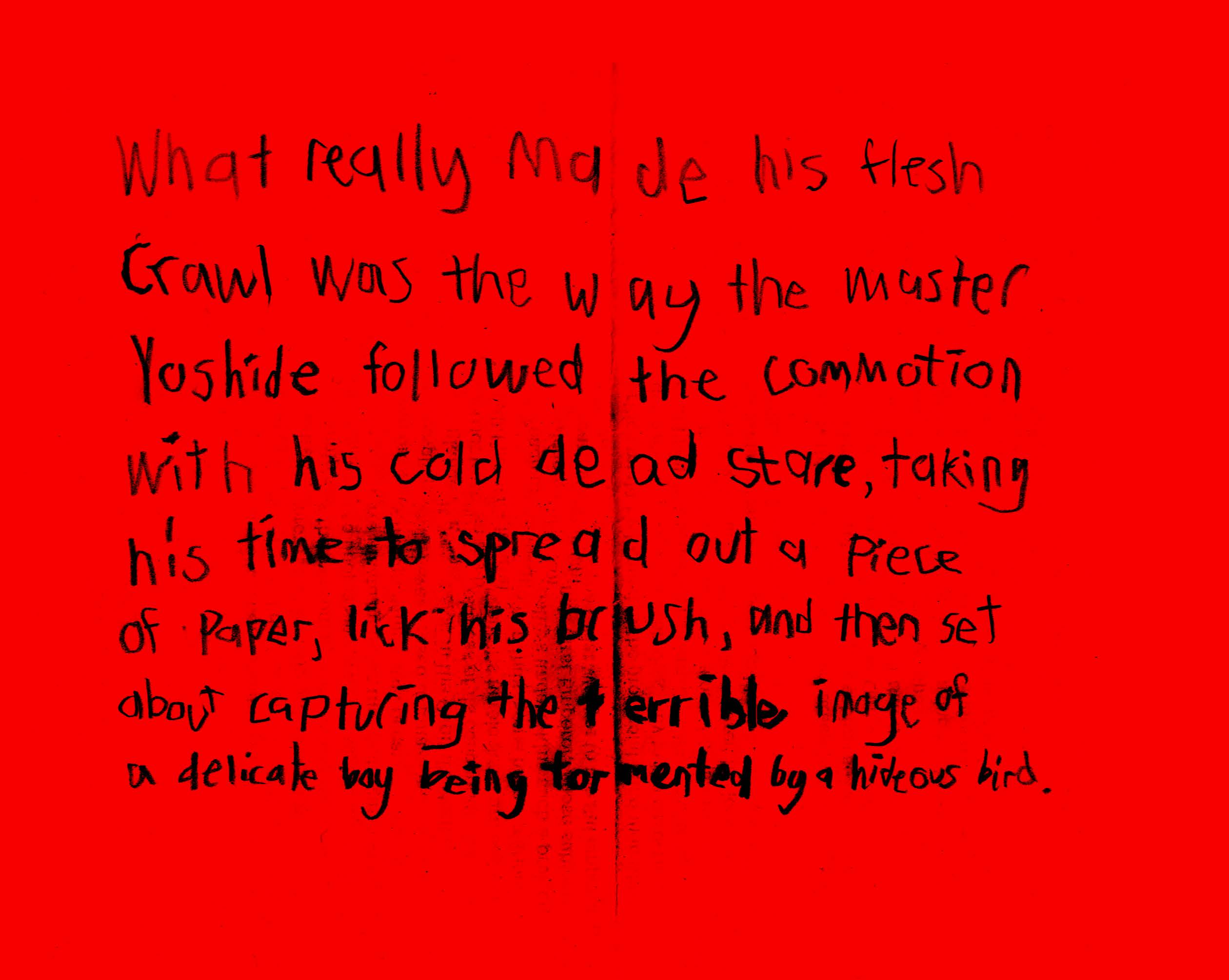
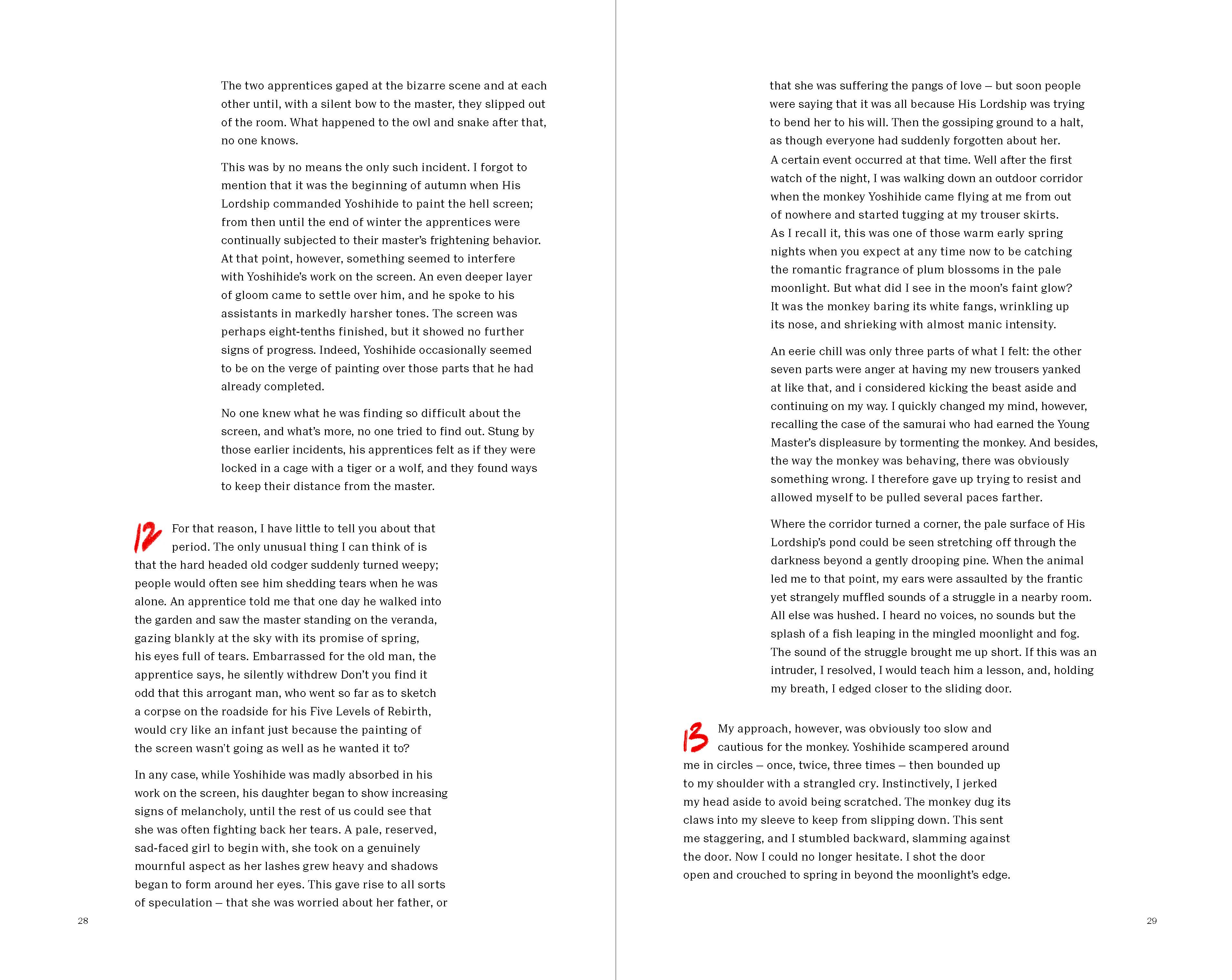
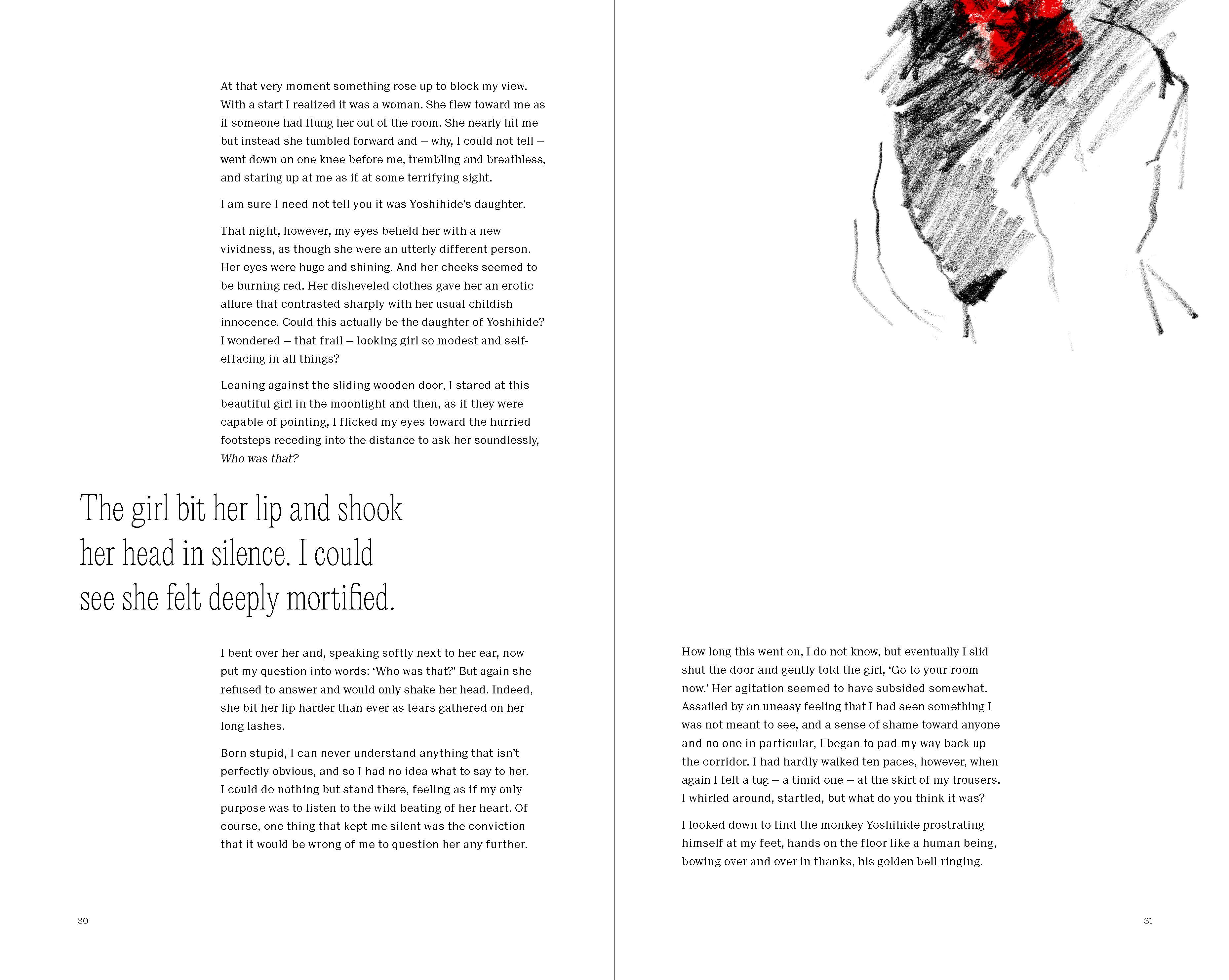
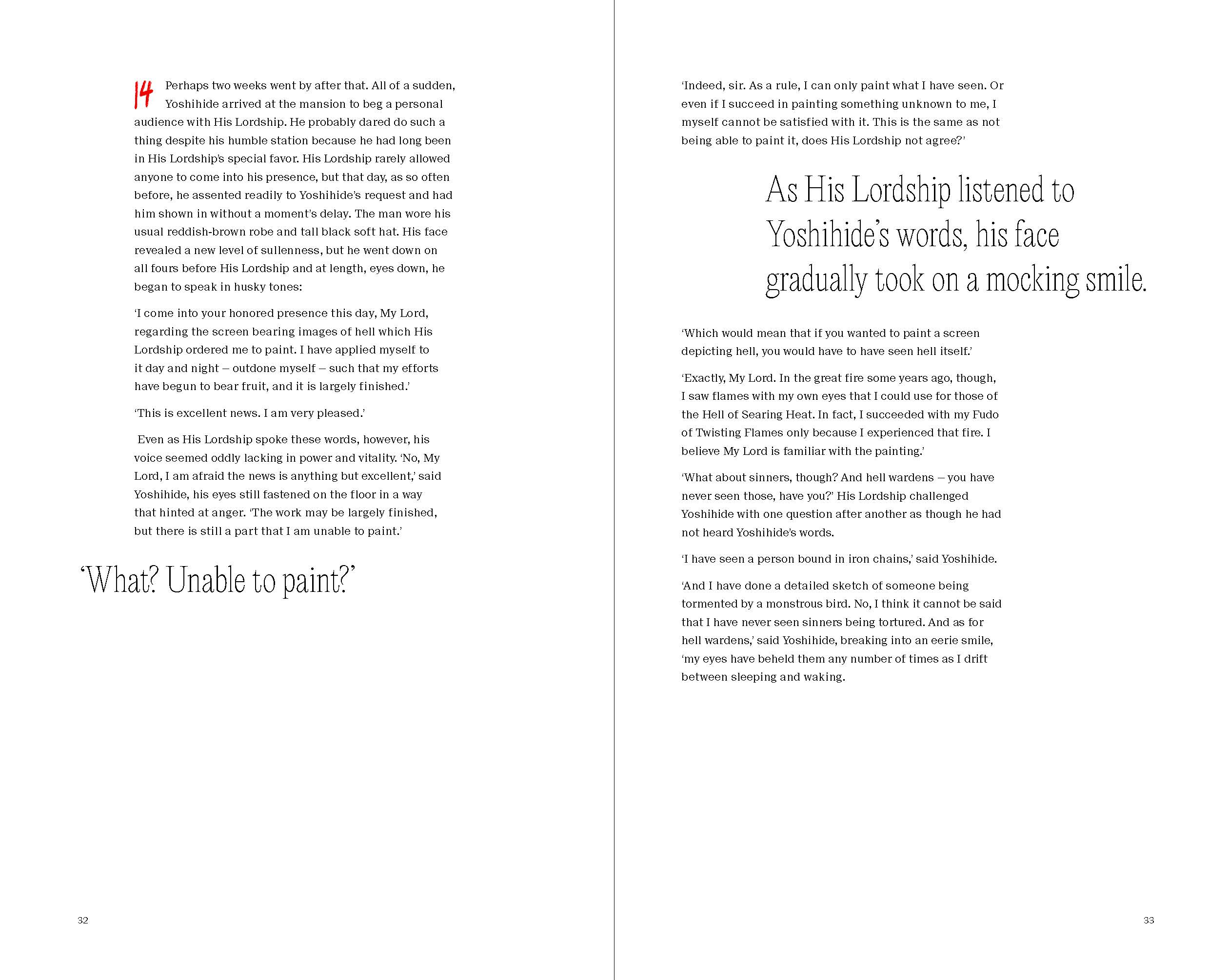
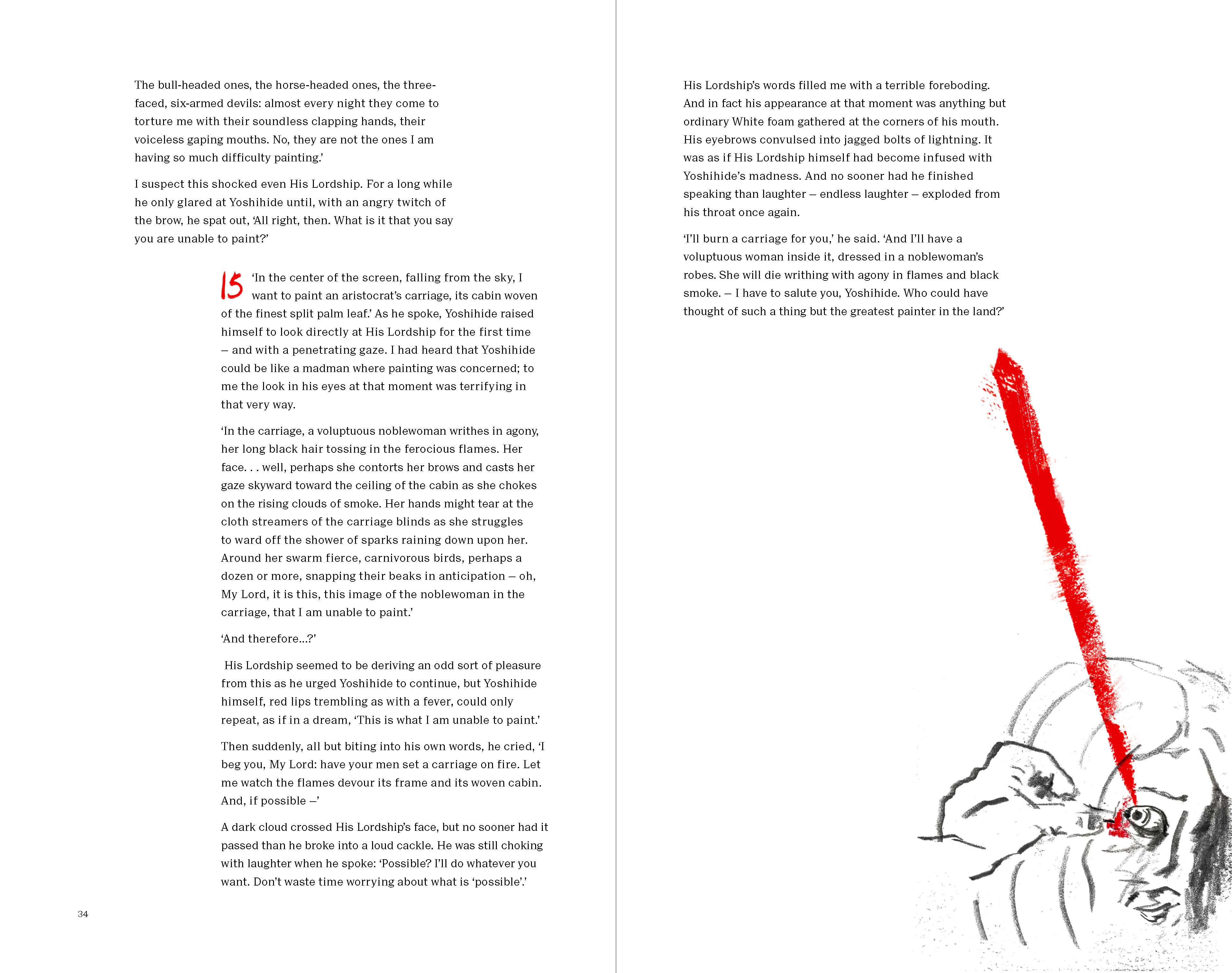
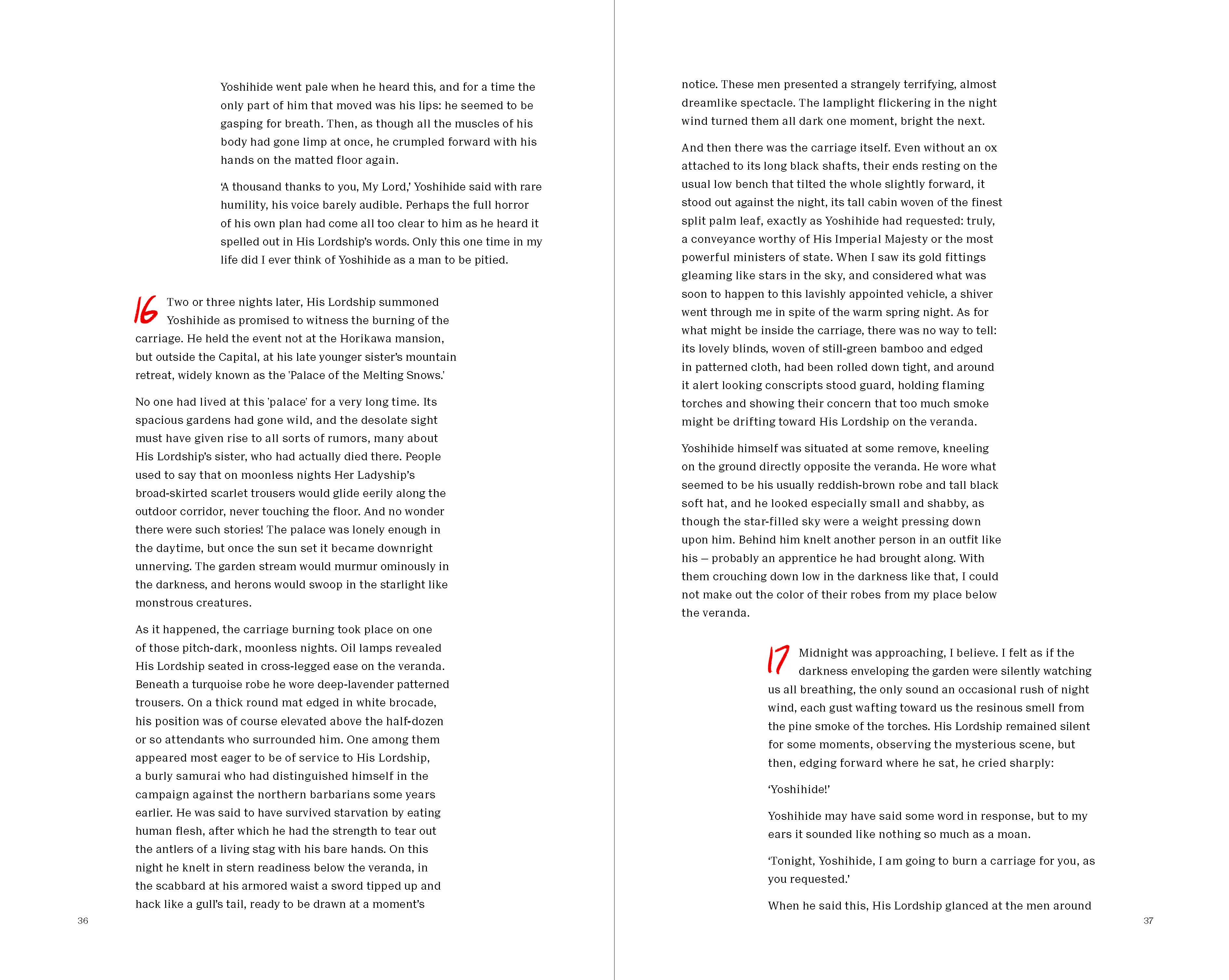
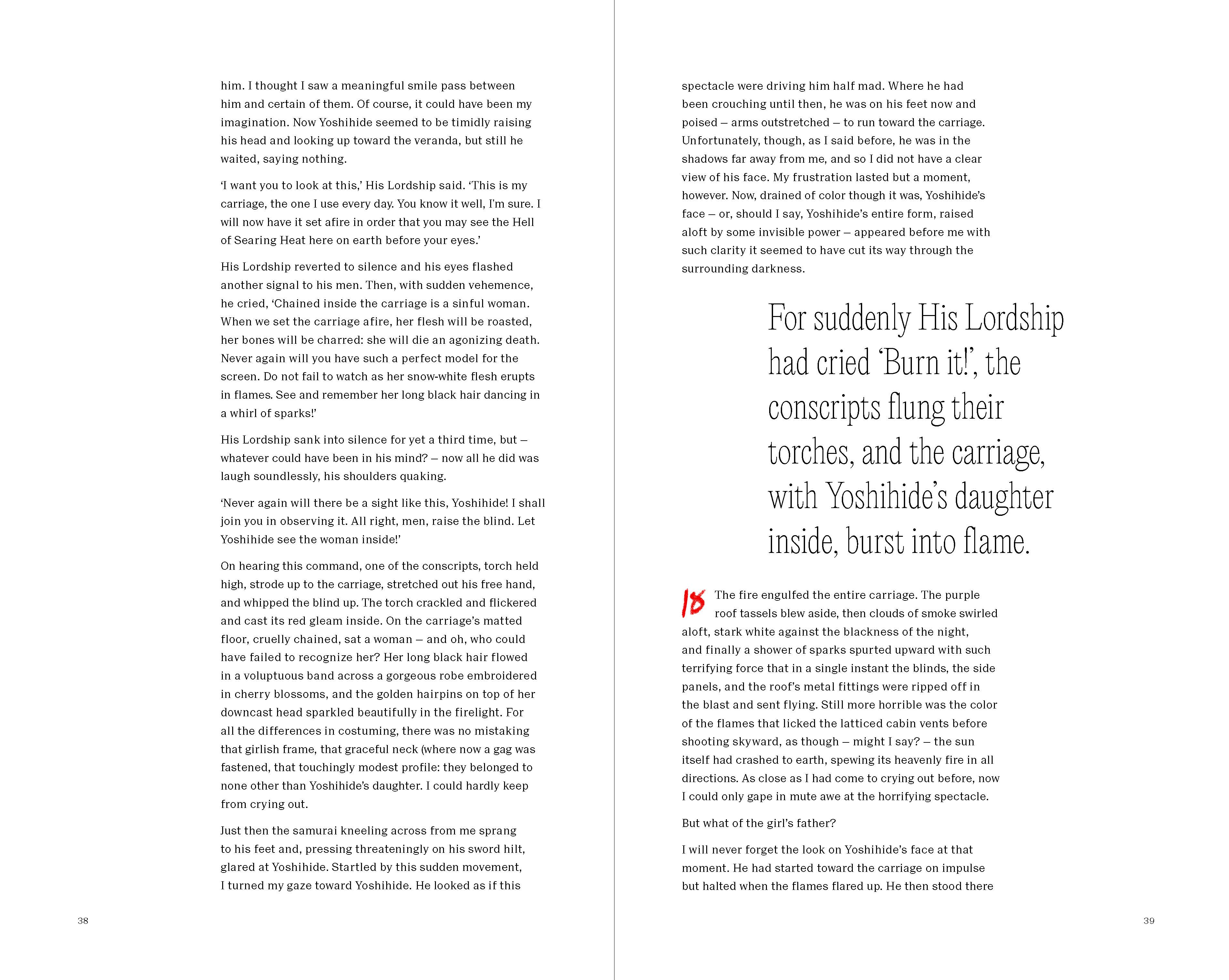
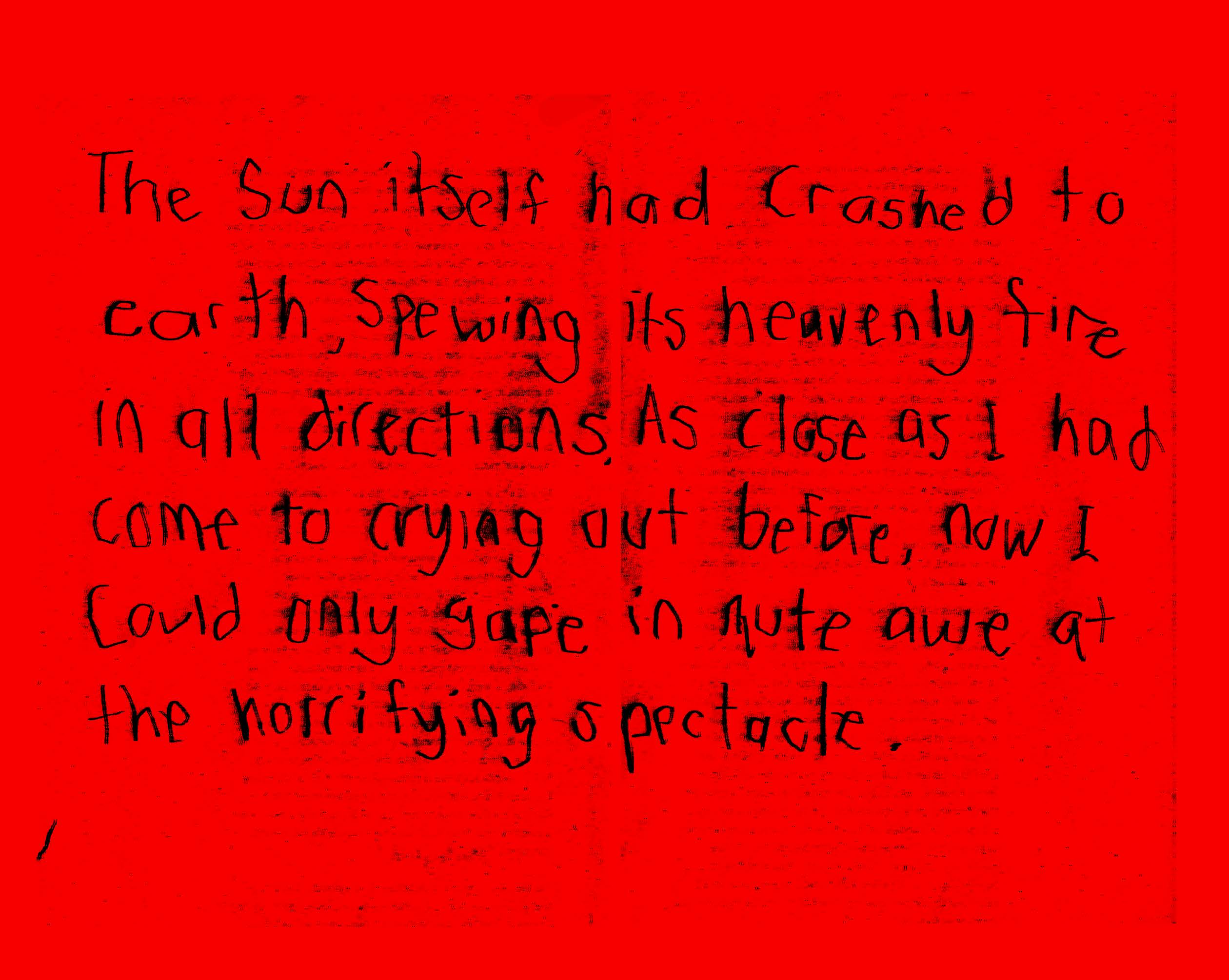
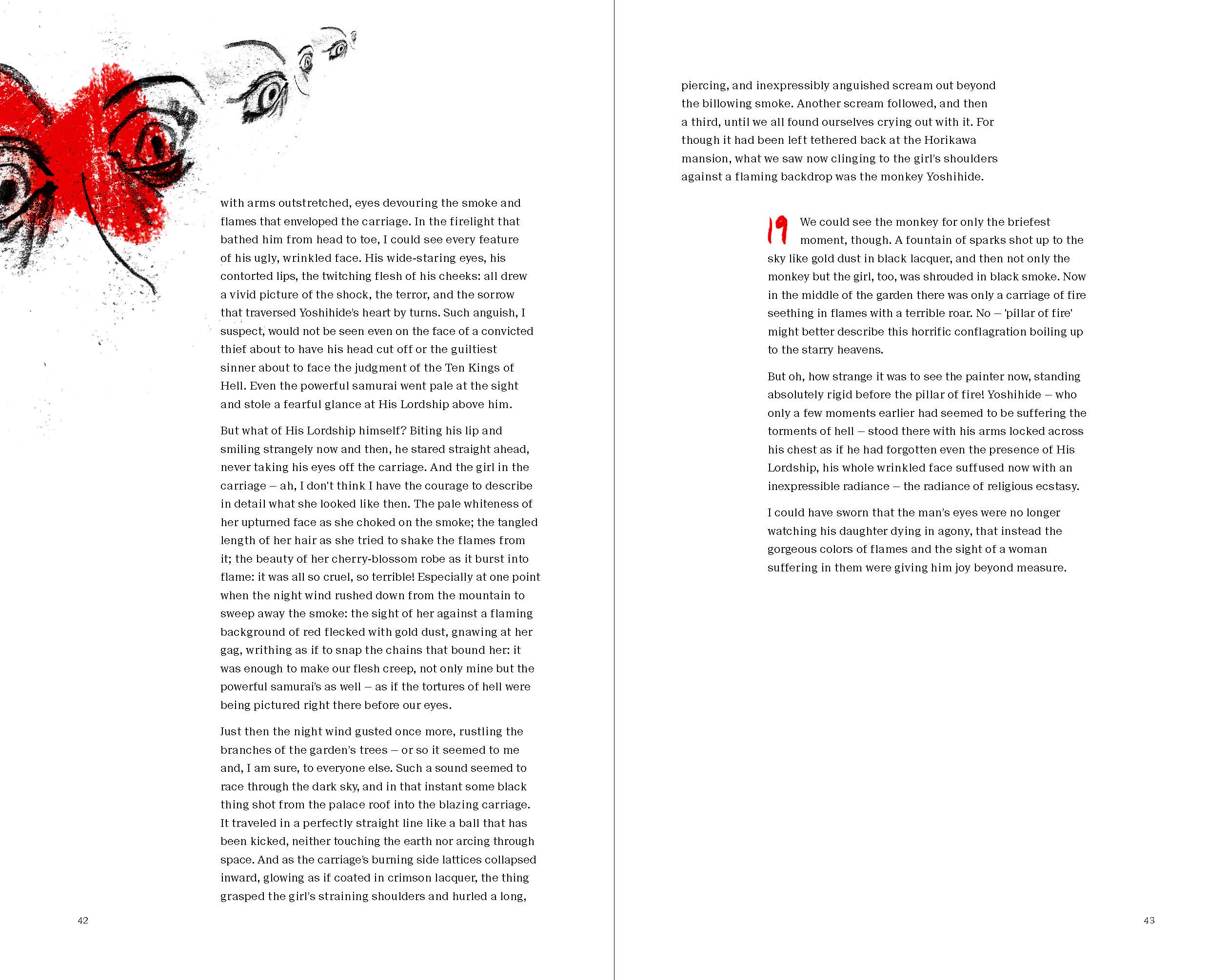
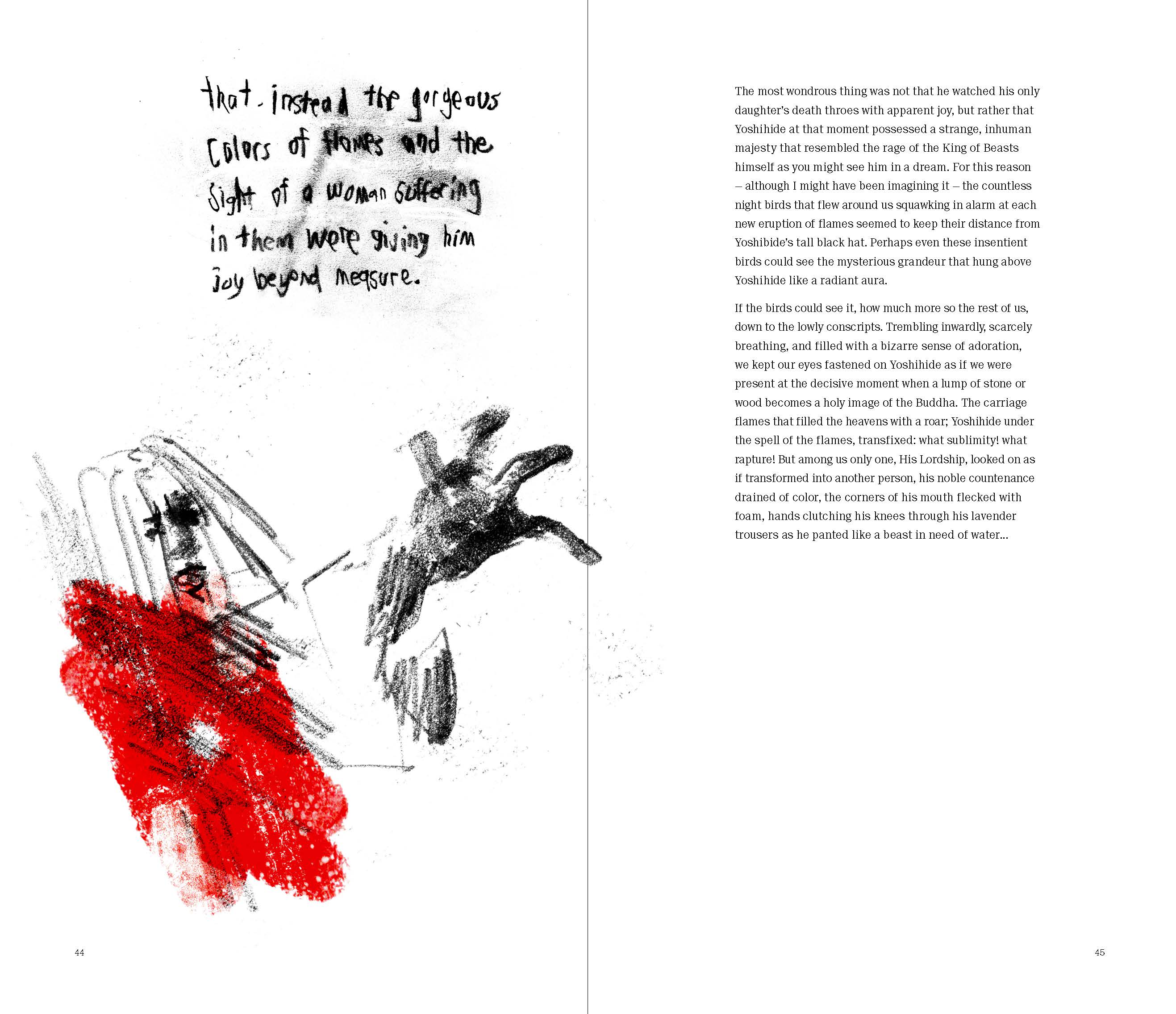
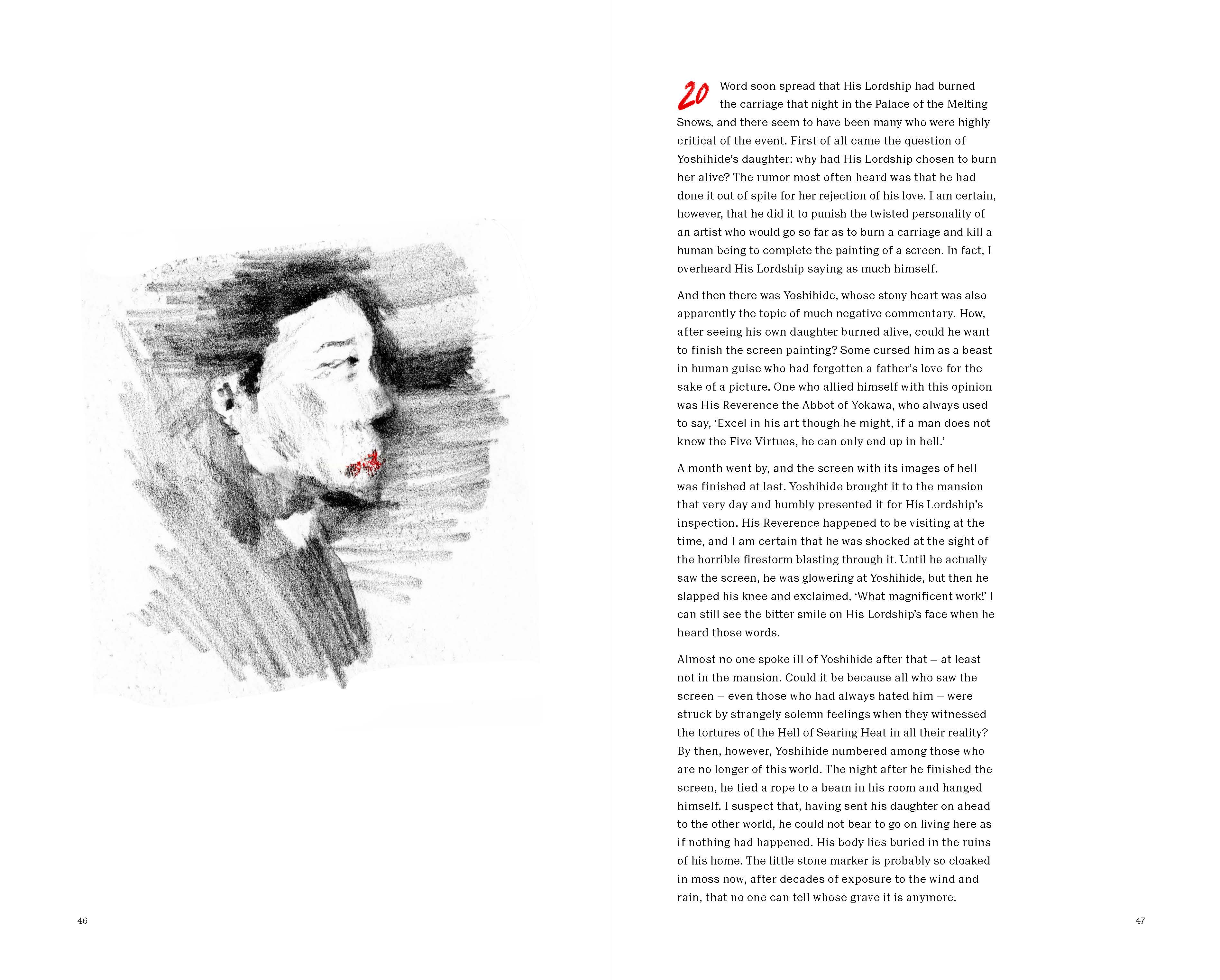


















































Ryūnosuke Akutagawa (1 March 1892 – 24 July 1927) was one of the first prewar Japanese writers to achieve a wide foreign readership, and is regarded as the "father of the Japanese short story". Hell Screen (Jigokuhen) is a short story originally published in 1918. It was a reworking of one of the stories in Uji Shūi Monogatari, a collection of tales written around the beginning of the 13th century. This short story follows Akutagawa's recurring style of updating ancient tales to reflect modern psychology. Here, it depicts the artist's obsession and just how far one will go in pursuit of their art. Is the suffering of others justified for great art? It also discusses aesthetics, what is considered beautiful? Can one find the beauty in the ugly truth?
Ryūnosuke Akutagawa (1 March 1892 – 24 July 1927) was one of the first prewar Japanese writers to achieve a wide foreign readership, and is regarded as the "father of the Japanese short story". Hell Screen (Jigokuhen) is a short story originally published in 1918. It was a reworking of one of the stories in Uji Shūi Monogatari, a collection of tales written around the beginning of the 13th century. This short story follows Akutagawa's recurring style of updating ancient tales to reflect modern psychology. Here, it depicts the artist's obsession and just how far one will go in pursuit of their art. Is the suffering of others justified for great art? It also discusses aesthetics, what is considered beautiful? Can one find the beauty in the ugly truth?
Ryūnosuke Akutagawa (1 March 1892 – 24 July 1927) was one of the first prewar Japanese writers to achieve a wide foreign readership, and is regarded as the "father of the Japanese short story". Hell Screen (Jigokuhen) is a short story originally published in 1918. It was a reworking of one of the stories in Uji Shūi Monogatari, a collection of tales written around the beginning of the 13th century. This short story follows Akutagawa's recurring style of updating ancient tales to reflect modern psychology. Here, it depicts the artist's obsession and just how far one will go in pursuit of their art. Is the suffering of others justified for great art? It also discusses aesthetics, what is considered beautiful? Can one find the beauty in the ugly truth?
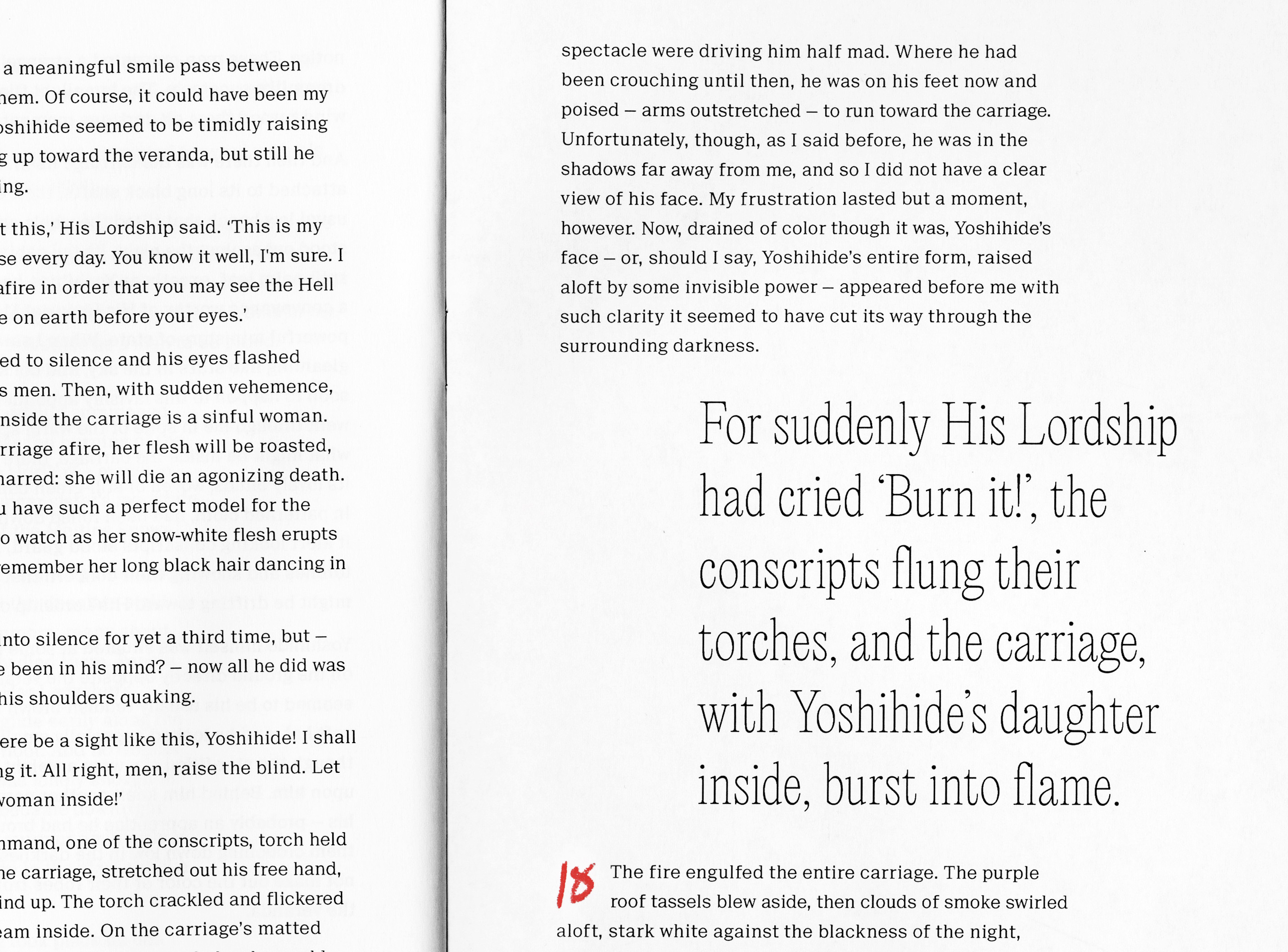
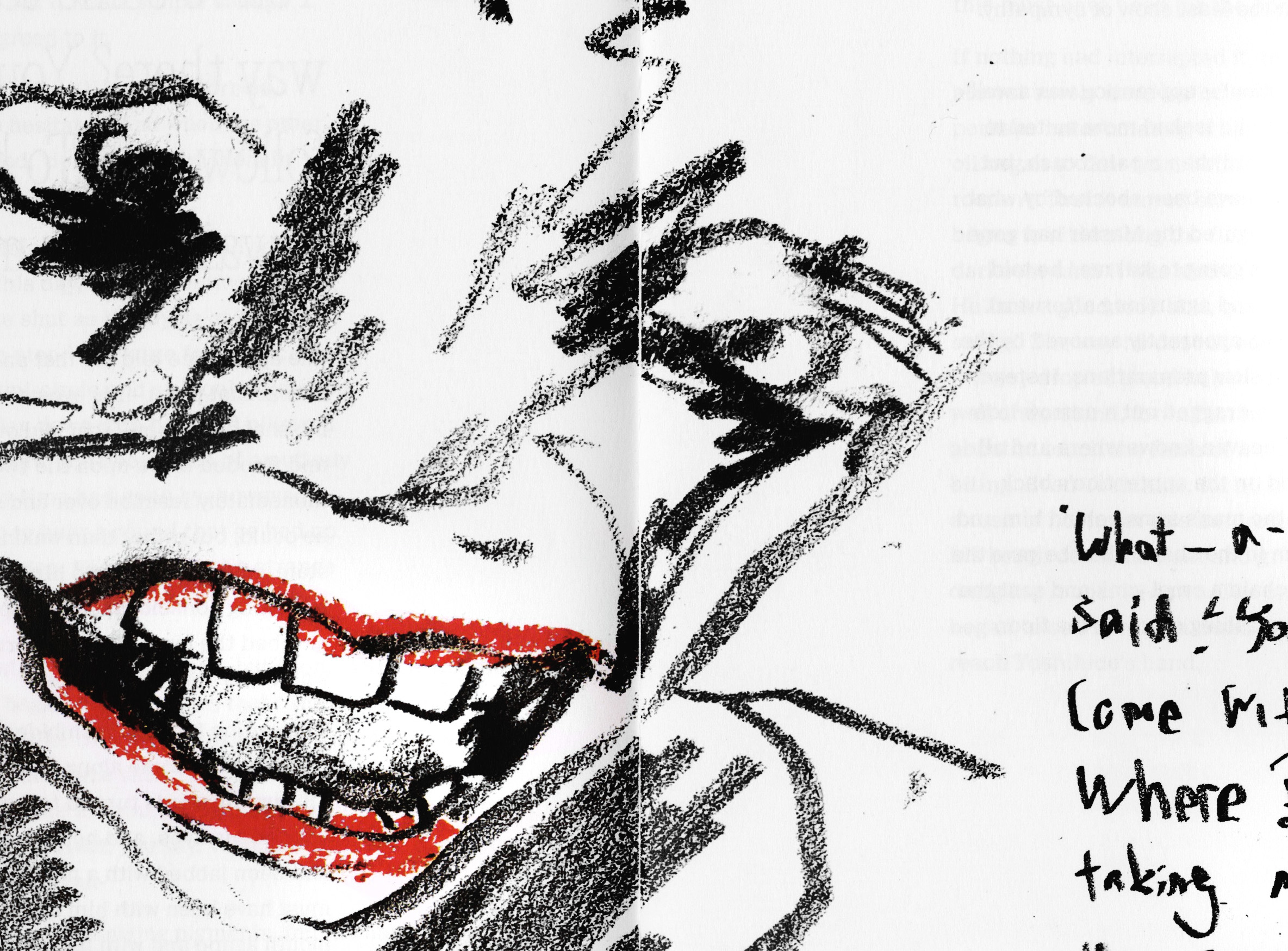
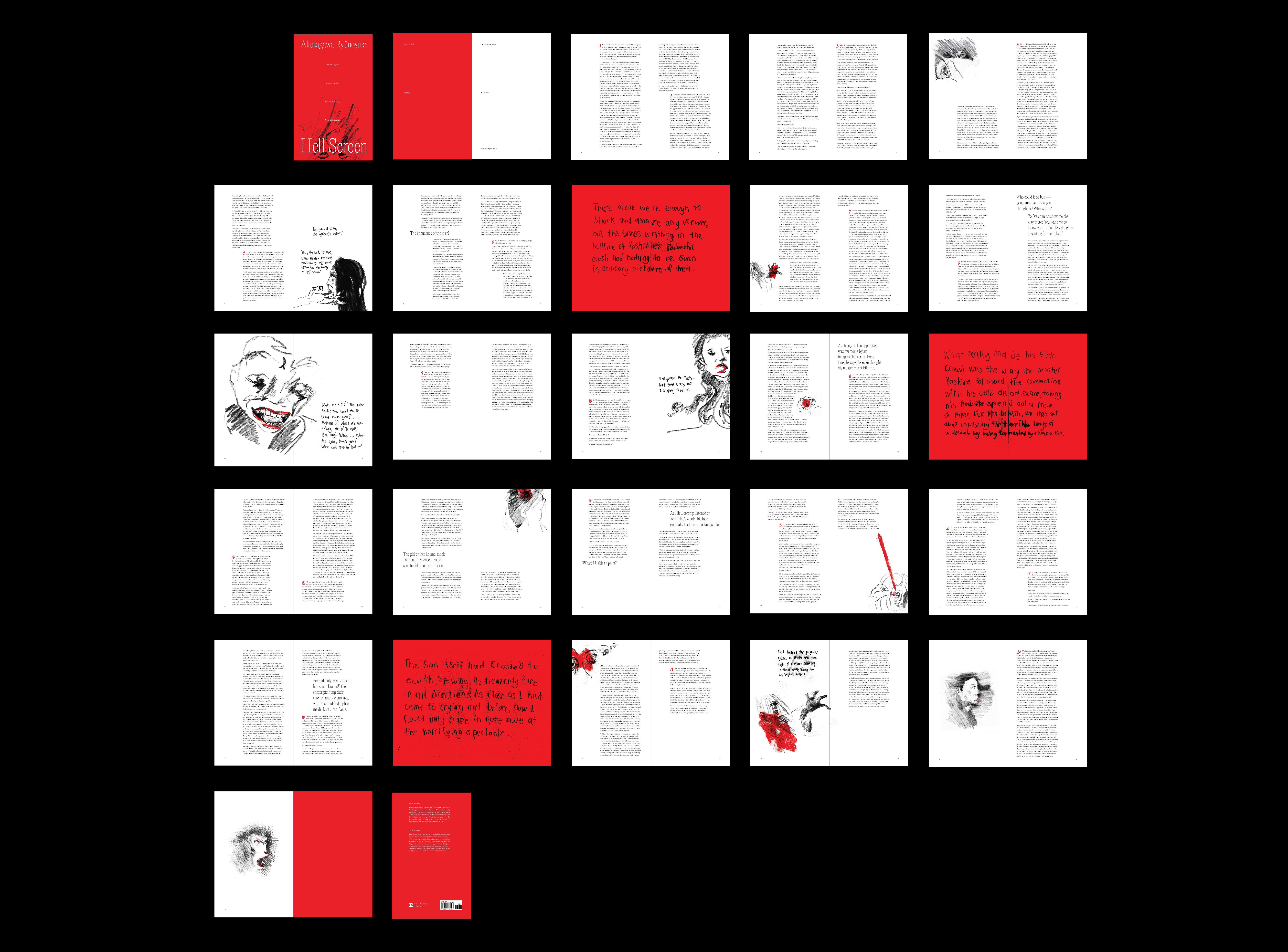






I had discovered this story as part of my journey towards reading more foreign literature. I wanted to express the visceral and unnerving horror of the story, through the use of illustration, typography, layout, and other elements.
I had discovered this story as part of my journey towards reading more foreign literature. I wanted to express the visceral and unnerving horror of the story, through the use of illustration, typography, layout, and other elements.
I had discovered this story as part of my journey towards reading more foreign literature. I wanted to express the visceral and unnerving horror of the story, through the use of illustration, typography, layout, and other elements.
